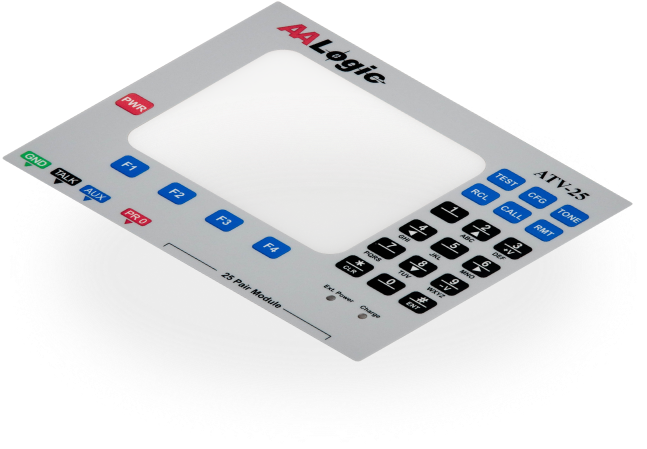Comprehending Exactly How Graphic Overlays Work to Improve Your Imaginative Jobs
Graphic overlays work as a crucial part in the realm of creative tasks, boosting both visual communication and audience engagement. By understanding their performance and potential applications, one can efficiently elevate not just the visual allure however also the quality of complicated details. The successful integration of these overlays requires mindful consideration of design concepts and purposes. As we explore the various kinds and ideal methods, it comes to be evident that the best technique can significantly influence project outcomes, leaving us to contemplate how to harness these devices for maximum influence.
What Are Graphic Overlays?
Graphic overlays are aesthetic aspects that are put on top of a base image or interface to enhance communication and user experience. They offer different functions, consisting of giving added information, assisting customer communication, and improving aesthetic charm. Typical applications of visuals overlays can be located in electronic user interfaces, advertising, and instructional materials.

Graphic overlays are commonly created using design software, allowing designers to manipulate shade, openness, and dimension to accomplish the wanted impact. Comprehending exactly how to properly implement visuals overlays is vital for designers aiming to boost their creative tasks.

Advantages of Utilizing Graphic Overlays
Using graphic overlays can significantly enhance the effectiveness of visual interaction throughout different mediums. One of the primary advantages is the capacity to share complicated info succinctly. By layering graphics, message, and pictures, overlays facilitate the discussion of data in a more digestible format, making it much easier for audiences to comprehend key principles rapidly.
In addition, graphic overlays can improve visual charm, drawing interest to particular elements within a layout. This is specifically advantageous in marketing and advertising, where capturing the visitor's rate of interest is extremely important. The tactical use colors, shapes, and typography in overlays can develop a natural and appealing aesthetic narrative, improving brand name recognition.
Additionally, visuals overlays offer flexibility in layout. They allow developers to adapt material for various platforms without starting from scratch, ensuring uniformity across numerous networks. This adaptability is crucial in today's digital landscape, where content must be optimized for diverse gadgets and styles.
Sorts Of Graphic Overlays
When thinking about the different kinds of graphic overlays, it is necessary to acknowledge their varied applications throughout various sectors. Graphic overlays can be categorized mainly into three kinds: practical, attractive, and informative.
Functional overlays are created to boost the usability of a product. Typically located in digital devices, these overlays commonly offer responsive feedback with elevated buttons or distinctive surface areas, improving customer communication. They can also offer as a protective layer, guarding the underlying components from wear and tear.
Attractive overlays concentrate on visual improvement, allowing brand names to reveal their identity with lively layouts and custom-made graphics. These overlays prevail in packaging, marketing, and point-of-sale products, where visual appeal is important for bring in consumers.
Informational overlays, on the other hand, are used to communicate essential information or instructions. They can be seen in applications such as signage, customer guidebooks, and training graphics, where clearness and readability are critical.
Each kind of visuals overlay serves a special purpose, adding to the total effectiveness of imaginative tasks while attending to details demands within various industries. Comprehending these differences is crucial for choosing the right overlay for your project.
Best Practices for Implementation
To make view website sure the effective execution of graphic overlays, it is important to develop a clear understanding of the project's purposes and the specific demands of the end-users. Begin by performing detailed study to determine the target audience and their preferences, as this will certainly inform layout selections and capability.
Following, create a thorough plan that describes the overlay's purpose, combination, and design procedure. This plan ought to consist of interface considerations, ensuring that overlays improve instead than block the customer experience - Graphic Overlays. Keep and take into consideration the aesthetic power structure consistency in style components, such as shade plans, icons, and fonts, to promote brand coherence
Checking is essential; collect comments from a depictive sample of users to identify possible problems and areas for enhancement. Repeat on the design based upon customer input and efficiency data. Additionally, make certain compatibility across various gadgets and platforms to make the most of accessibility.
Tools for Creating Overlays
Producing reliable graphic overlays requires the right tools to convert design principles into useful applications. Different software application and systems are available, each tailored to details needs and ability levels.
Adobe Photoshop and Illustrator are industry standards, using comprehensive capabilities for producing and controling overlays. These tools give sophisticated features such as layer monitoring, mixing settings, and vector graphics, enabling designers to develop top notch and elaborate overlays.
For those seeking a more user-friendly strategy, Canva and Figma are exceptional options (Graphic Overlays). Canva's intuitive user interface permits users to produce overlays promptly using why not check here pre-designed layouts, while Figma facilitates collective layout in real-time, making it optimal for groups
In addition, open-source options like GIMP and Inkscape offer robust capabilities without the connected costs of exclusive software application. These i was reading this devices permit for adaptability in style and can fit various data layouts, making certain compatibility throughout various systems.

Final Thought
In verdict, graphic overlays serve as effective devices for improving creative projects by providing visual clearness, visual allure, and brand uniformity. By recognizing the basic concepts and advantages associated with visuals overlays, designers can significantly enhance the quality and effectiveness of their visual communications.
Graphic overlays serve as a critical part in the realm of innovative projects, enhancing both aesthetic communication and target market engagement.Graphic overlays are frequently produced making use of style software application, allowing developers to manipulate transparency, size, and color to attain the preferred effect.Additionally, visuals overlays can improve visual appeal, attracting focus to certain elements within a style.Furthermore, visuals overlays offer adaptability in layout.In conclusion, graphic overlays offer as powerful tools for improving creative tasks by offering visual quality, aesthetic charm, and brand consistency.